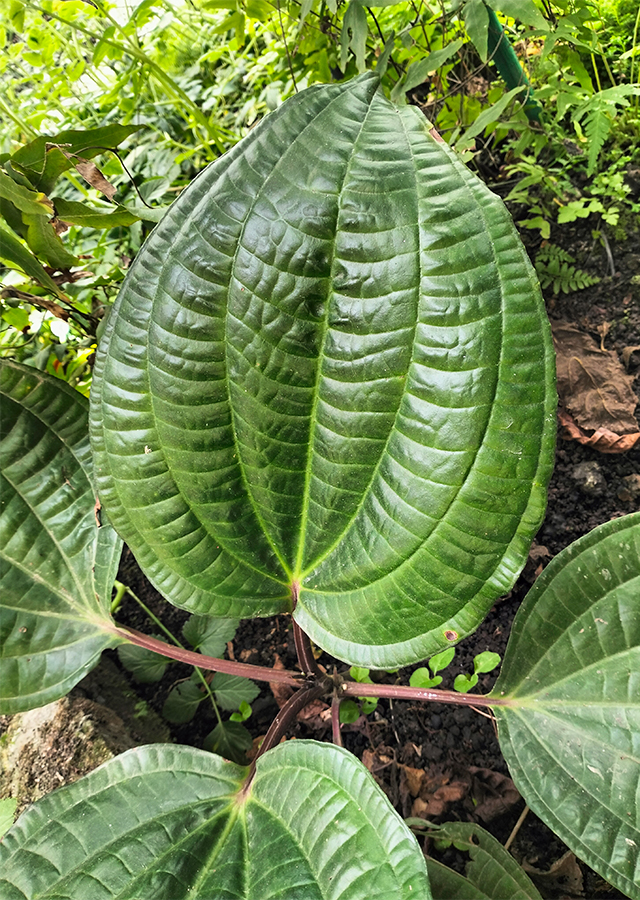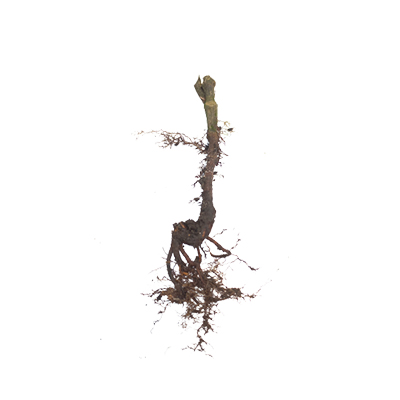Phyllagathis rotundifolia
Phyllagathis rotundifolia (Jack) Blume
Melastomataceae
Location in our garden
Green House



Synonym
Melastoma rotundifolium Jack
Phyllagathis decipiens Bakh.f.
Phyllagathis praetermissa A.Weber
Habitus
Herbaceous. Perennial herb, creeping, grows to 30 cm in height and extends up to 60 cm
Part Used
Leaves
Roots
Growing Requirements
Need Shade
Habitat
Forest
Overview
Phyllagathis rotundifolia is a creeping plant found in Peninsular Malaysia and Sumatra. This species is widely used as a medicinal plant, especially in Peninsular Malaysia, often used for postpartum care by rural people. This species has also been used as a traditional medicine by the Suku Anak Dalam Jambi. Based on the results of the study, it is known that the leaf extract of Tapak Sulaiman has antibacterial activity that can inhibit E. coli bacteria, while the stem extract can inhibit S. aureus bacteria.
Vernacular Names
No found data on this. Need further research.
Agroecology
Commonly found in lowland forests, also grows on hillsides and areas of the moist forest floor. Its growth prefers areas with shaded or partially shaded positions, and requires moist, well-drained soil conditions.
Morphology
- Stems - red color.
- Leaves - unifoliate, round to heart-shaped, measuring 5 - 20 cm long and 4 - 12 cm wide, shiny, covered with fine hairs, dark green.
- Flowers - purple, pink. Head-like inflorescence, short stalk, surrounded by 4 involucral bracts.
Cultivation
Propagated by seeds.
Chemical Constituents
Galloylated cyanogenic glucosides based on prunacin (2',6'-di-O-gallate, prunacin 3',6'-di-O-gallate, prunacin 4',6'-di-O-gallate, runasin 2',3 ',6'-tri-O-gallate, prunacin 3',4',6'-tri-O-gallate, prunacin 2',3',4',6'-tetra-O-gallate), alkyl glycoside, oct-1-en-3-yl -arabinofuranosyl-(1→6)-β-glucopyranoside, hydrolysable tannin, galotanin, ellagitannin, ellagic acid and aromatic acid derivatives, allic acid, methyl ester, β-glucogallin, 3,6-di-O-galloyl-d-glucose, 1,2,3,6-tetra-O-galloyl-β-d-glucose, strictinin, 6-O-galloyl-2,3-O-(S)-hexahydroxydiphenoyl-d-glucose, praecoxin B, pterocarinin, terpenoid, phenol, lipophilic, alkaloid, and flavonoid.
Traditional Medicinal Uses
- Treating fever or malaria, abdominal pain.
- Used as postnatal care to give strength to the mother.
- Has antibacterial activity.
Part Used
Reference Sources
- Royal Botanic Gardens. 2021. Plants of the World Online: Phyllagathis rotundifolia (Jack) Blume. https://powo.science.kew.org/taxon/urn:lsid:ipni.org:names:574722-1. 17-04-22.
- Flora Fauna Web. 2021. Phyllagathis rotundifolia. https://www.nparks.gov.sg/florafaunaweb/flora/2/3/2330. 17-04-22.
- Ing S. K., Tanaka T. Kouno I. 2002. New Cyanogenic and Alkyl Glycoside Constituents from Phyllagathis rotundifolia. Journal Natural Product, 65(2):131–135. https://pubs.acs.org/doi/pdf/10.1021/np010393v. 17-04-22.
- Poay T. H., Kong L., S. Hock C. C. 2011. Characterisation of Galloylated Cyanogenic Glucosides and Hydrolysable Tannins from Leaves of Phyllagathis rotundifolia by LC-ESI-MS/MS. Phytochemical analysis. https://analyticalsciencejournals.onlinelibrary.wiley.com/doi/full/10.1002/pca.1312. 17-04-22.
- Philip E., Jaafar H.Z., Rizal M.K.M. 2007. THE GROWTH OF PHYLLAGATHIS ROTUNDIFOLIA UNDER DIFFERENT LIGHT CONDITIONS. Journal of Tropical Plant Physiology 2 (2007): 1-5.

